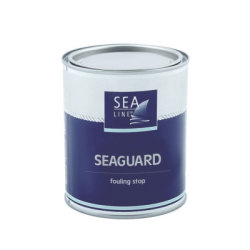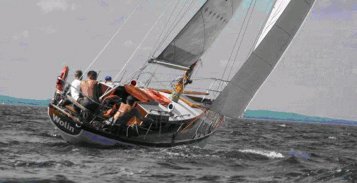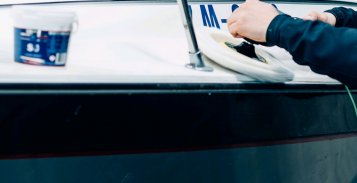
SEAGUARD FOULING STOP – a new anti-fouling paint for hulls.
Contrary to the traditional anti-fouling paints, SEAGUARD does not contain active ingredients, i.e. toxic biocides. The bottom paint is much more environmentally friendly, which is significant especially in the case of such reservoirs as lakes. It can also be used for fresh waters, coastal waters and salt waters. Modern solutions were applied in producing this paint which allowed to create a coating which will make it more difficult for lichens to maintain and develop on a surface. Sea-Line Seaguard works best for units moving with the speed not higher than of 30 knots and which are used often.
SEAGUARD is a self-polishing paint which is an extra benefit for users. It can be used for all types of yachts and boats – laminate, wood, steel and aluminium. It is available in 0,75 l and 2,5 l containers, navy blue and white colours. SEAGUARD is a paint which can safely be applied with air spraying and its advantage is high capability – up to 10m2 out of 1 litre.
The product was designed in view of the countries where anti-fouling paints containing biocides are forbidden and recalled. SEAGUARD FOULING STOP is compatible with the majority of available anti-fouling products and will be available from 10th March 2016.

Sorry, this entry is only available in Polish.

Come and join us at METSTRADE 2023, METSTRADE the best event for marine industry professionals, happening from November 15th to […]

Visit us and our production plant without traveling

New in the 2023 season is a new polishing wool The new black and white polishing pads in premium quality […]
Sea-Line HARD and Sea-Line self-polishing antifouling are not intended for aluminum surfaces. They include copper oxide, which in contact with aluminum causes galvanic corrosion. Especially on aluminum, we offer ALU-PLUS self-polishing anti-fouling paint, which, in addition to excellent adhesion to aluminum, is also 30% more effective than traditional anti-fouling paints.

Refilling and to tackle inequalities caused by damage to or during the course of production

Protects boat surfaces from the effects of destructive activities osmosis and corrosion

Provide an aesthetic and a perfect look of the boat also protective against water and UV radiation

Protect the hull from fouling with algae and shells

Effectively remove scratches, refresh the color of gelcoat or paint, fast shine effect

Special preparations for effective cleaning and refinishing

Laminating, gluing and filling in cracks in gelcoat

Range of products useful in the boat builder work